High Plains Paddling
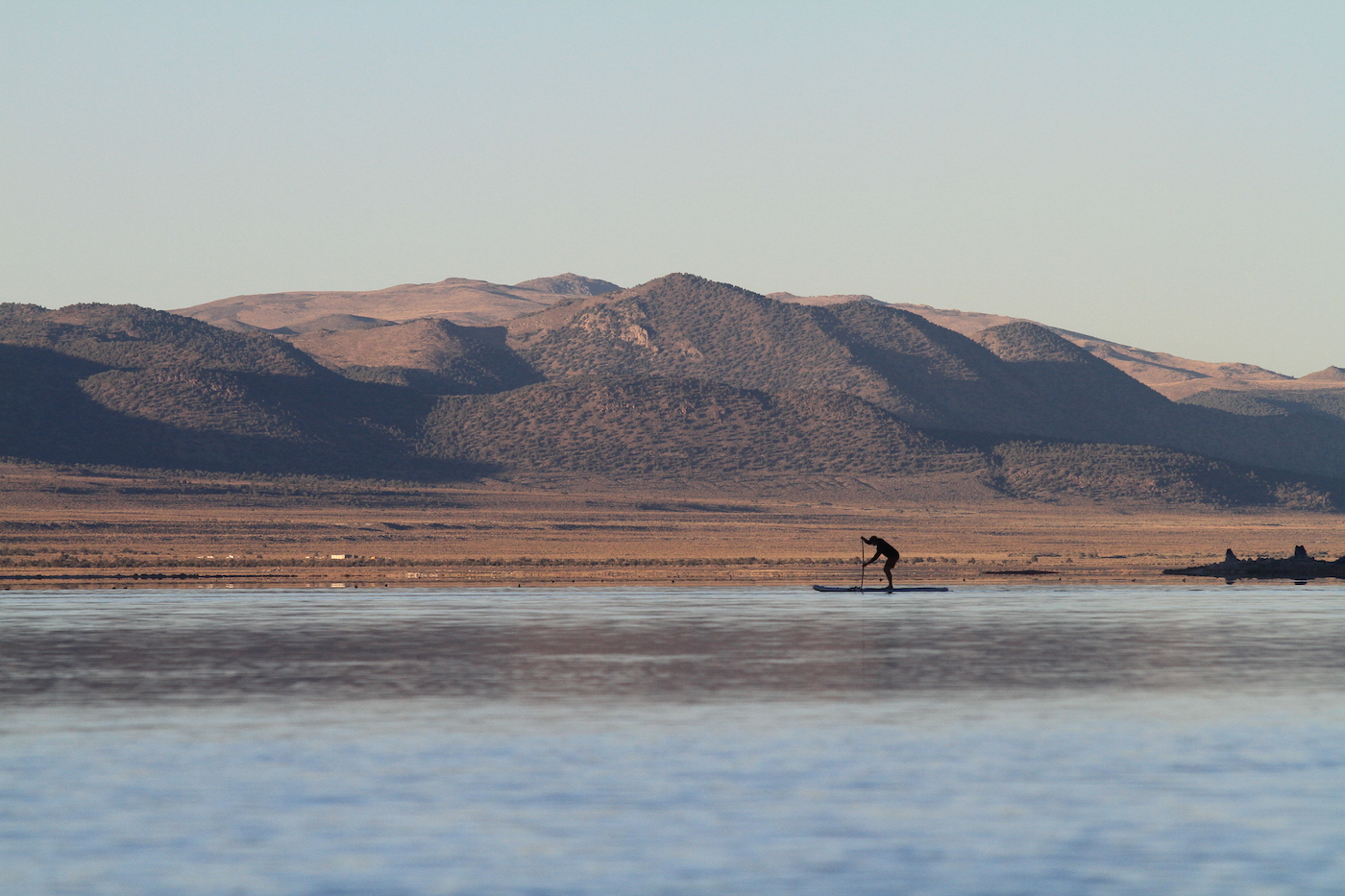
The stoic gentleman at the Mono Lake visitor center studied me like a deputy sheriff during a roadside sobriety test.
“You can die out there,” he said deadpan. “Folks paddle out there and they don’t come back. The winds come from out of nowhere and catch people off guard.”
I did my damnedest to convince him that myself, Patrick O’Hea,and Will Miller could handle whatever was thrown at us, but he was leery of our paddling prowess. I am a kayak guide at the Channel Islands National Park. Patrick and Will are former U.S. National Rowing Team members, but the man with the mustard-colored vest, classic comb-over, and bifocal eye glasses wasn’t having it.
“People come out here to paddle a kayak or a standup paddleboard and underestimate the winds blowing out of the high desert,” he continued, as a busload of Japanese tourists flooded the entryway to this Eastern Sierra visitor center. “Just sign here so we can keep track of your whereabouts.”
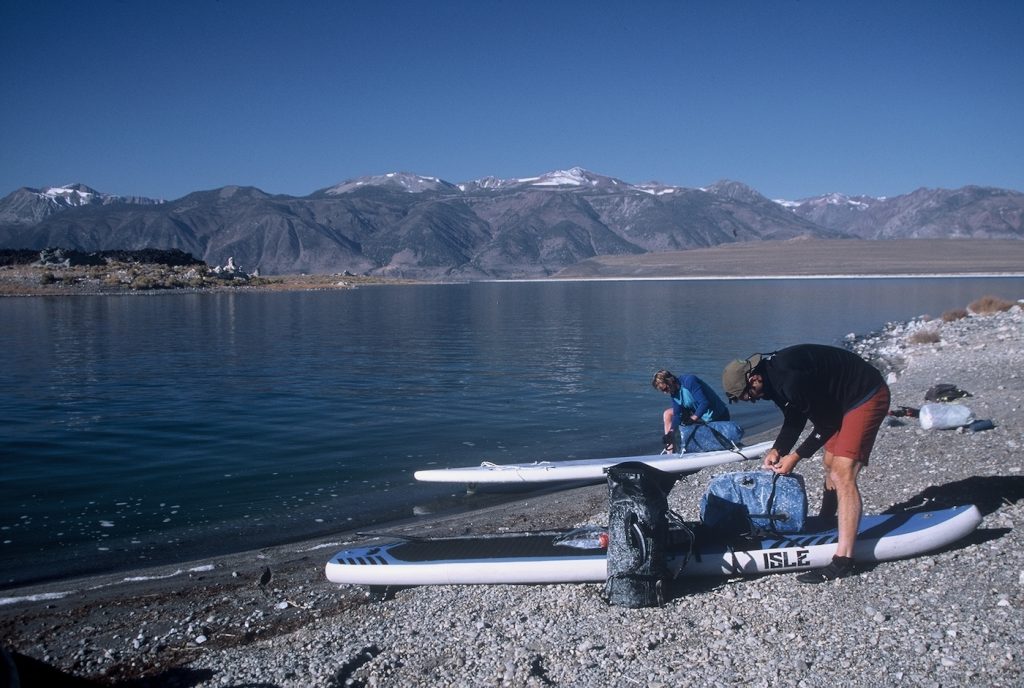
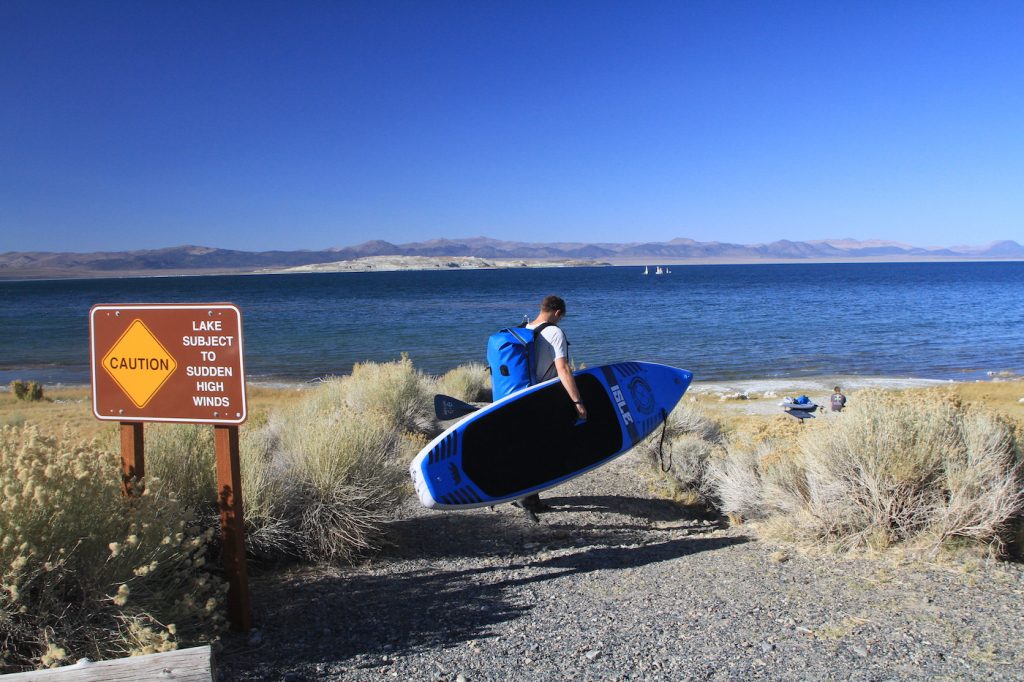
Now we’re talking; a free permit allowing us three days of paddling this high desert realm at the base of the snow-capped Eastern Sierra above Highway 395. After ditching the visitor center’s watchdog, we drove our trucks, rumbling down to Navy Beach on the south side of the saline lake and below the daunting Mono Craters. We had it to ourselves, the knobby tufas, the rushing freshwater creeks, the barren, volcanic islands, and the keen eyes of chirping ospreys.
Launching was effortless as we sprinted across the lake to Paoha Island, easily the largest isle on the entire lake. I admit, we did see the “Sudden High Winds” sign where we launched, but Mono Lake was glassy, not a ripple of water out of place. Paddling was sublime while cutting a gentle swath through huge flocks of eared grebes and red-necked phalaropes, migratory birds that number well into the thousands. Mono Lake is a vital stopover for migratory birds, drawn there to feast on briny shrimp that ball up into thick clouds in the shallows.
On the Mono Lake map, it only showed the three most prominent isles; besides Paoha, there’s Negit and Gaines. However, once we rounded the east tip of Paoha, smaller islets revealed themselves, eight islands in all. We had our pick of the islets, selecting a small gravely isle covered in high desert sage with epic views of Tioga Pass winding its way into Yosemite National Park. We were surrounded by resident California gulls gorging on briny shrimp, a staple of so many avian species frequenting Mono Lake, except the ospreys though that perched themselves on the clusters of tufa columns like ancient gargoyles.
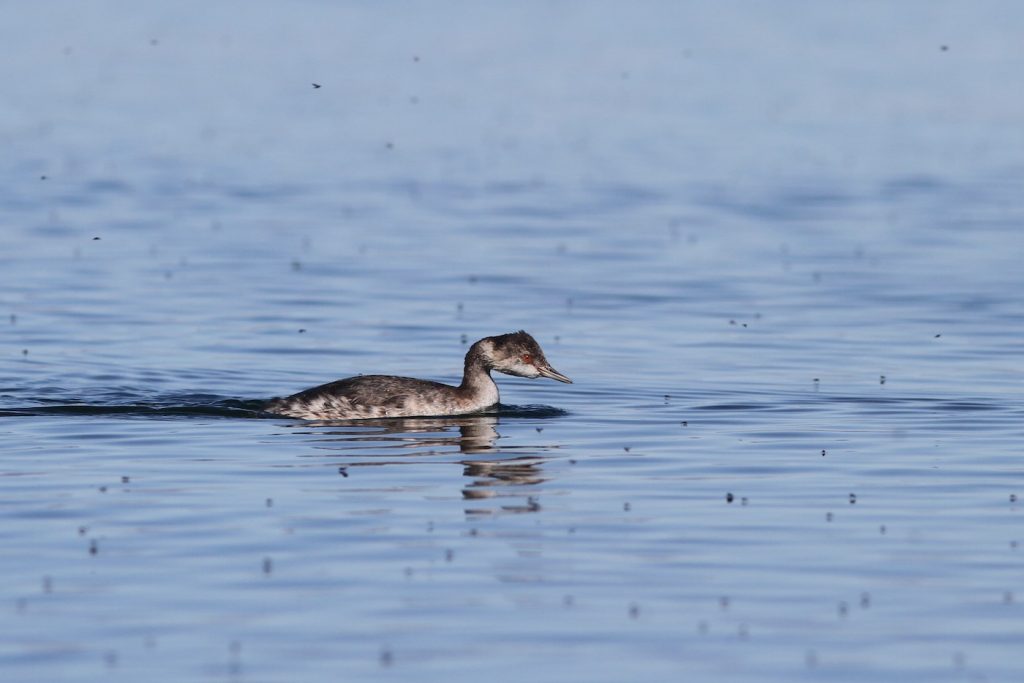
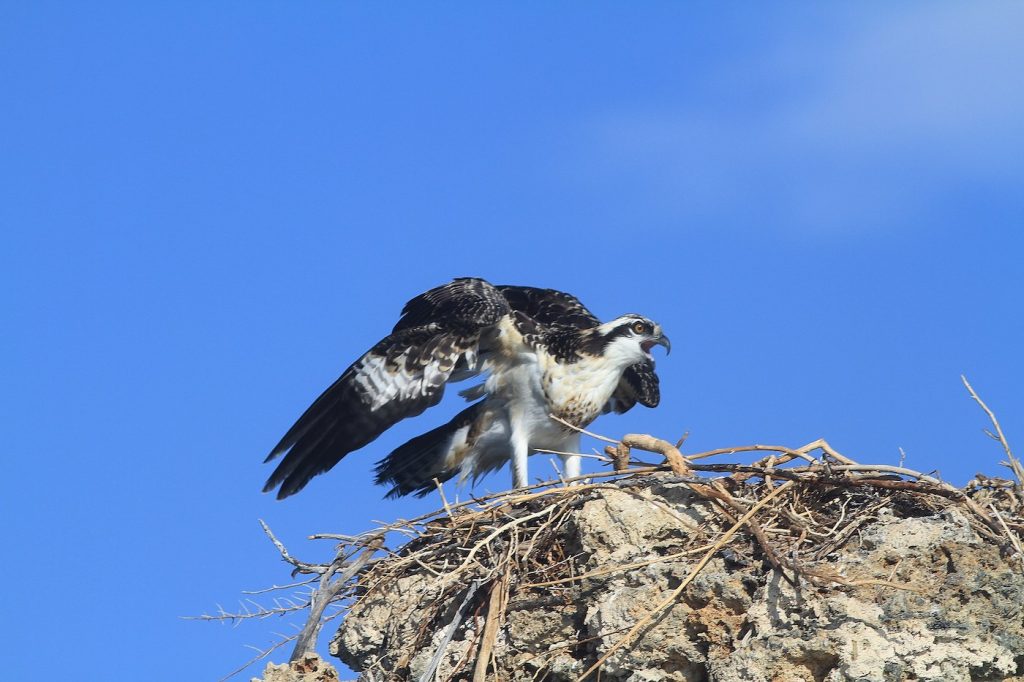
The next night we found an ideal campsite on a sandy beach elevated just enough to soak in the expanse of Mono Lake. Before sundown we paddled for the tufas, weaving between the limestone columns that housed several osprey nests on the tallest tufas. The daunting Mono Craters loomed on the southern horizon, the ashy-coned cylinders were stacked on a massive, ashy scree slope, appearing like a moonscape.
After weaving between columns of tufas, we returned to the sandy berm to camp, and nearby we were fortunate to have a running creek, fresh water cascading out of the Eastern Sierra. There was just enough room for three tents tucked within dense thickets of desert sage. We made a fire and watched epic monsoonal clouds billowing skyward over the desert, just in time for a stunning sunset.
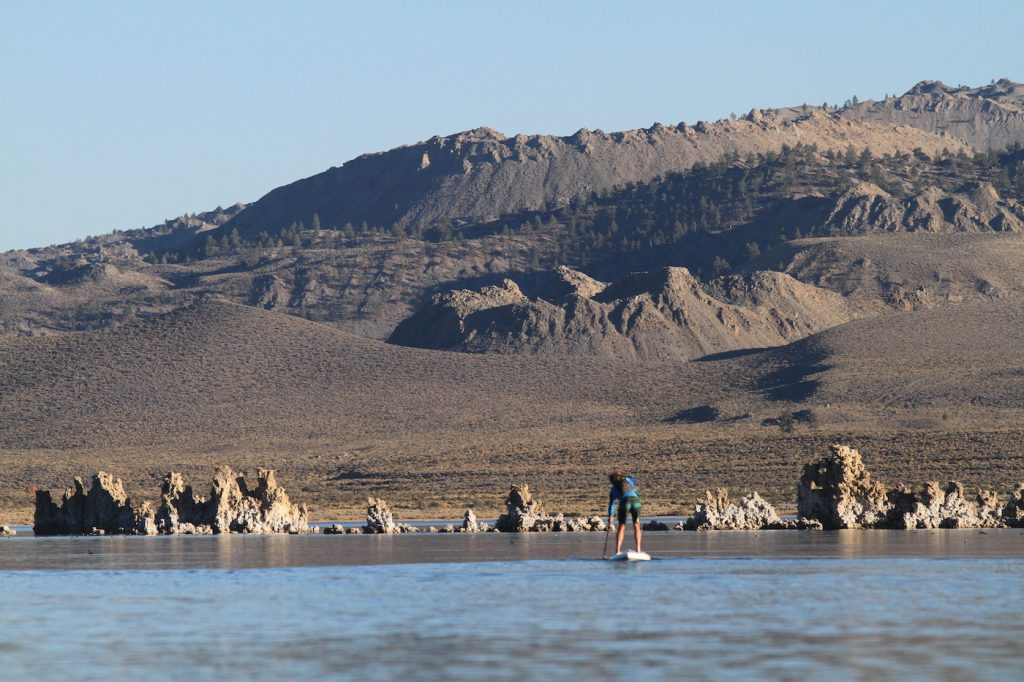
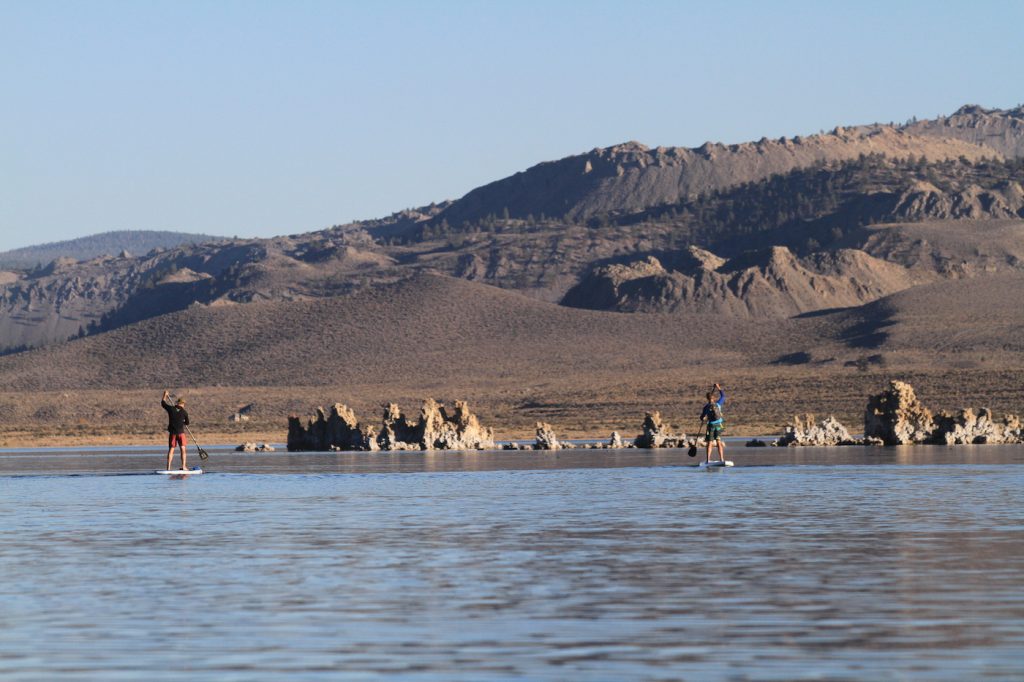
Then, as dusk approached, we watched in amazement as two men rowed out onto the lake in a flimsy blown-up raft. They had a makeshift motor on its stern that looked like an eggbeater. It appeared as if they were trying to get to the west end of Paoha Island before dark. Winds blowing out of the Eastern Sierra began to stiffen, and of course that was when their motor conked out.
Suddenly, one guy was sitting on a lounge chair erected in the raft and paddling with just one oar. He loudly directed his “first mate” to lie atop the bow and paddle with his hands. They zigzagged for the better part of an hour. As we watched and even laughed a little, we also discussed why those high wind warning signs are posted and the interrogation I received before our paddling trip began.
They must have spotted the glow of our fire and eventually they managed to get back to the shoreline. Whether they realized it or not, they were fortunate to find themselves at our campsite.
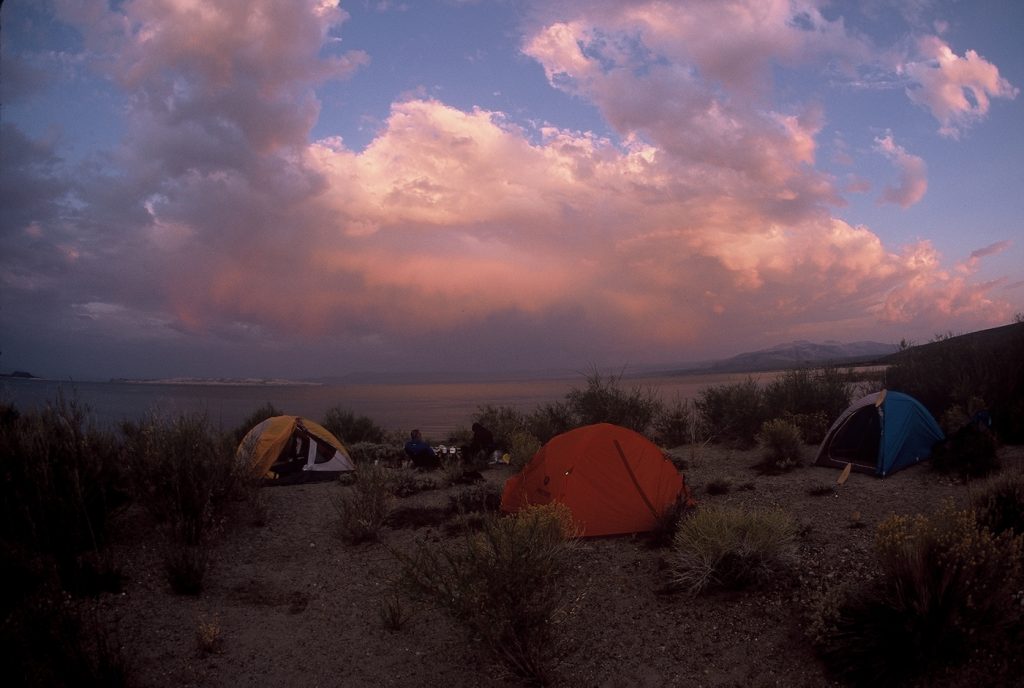
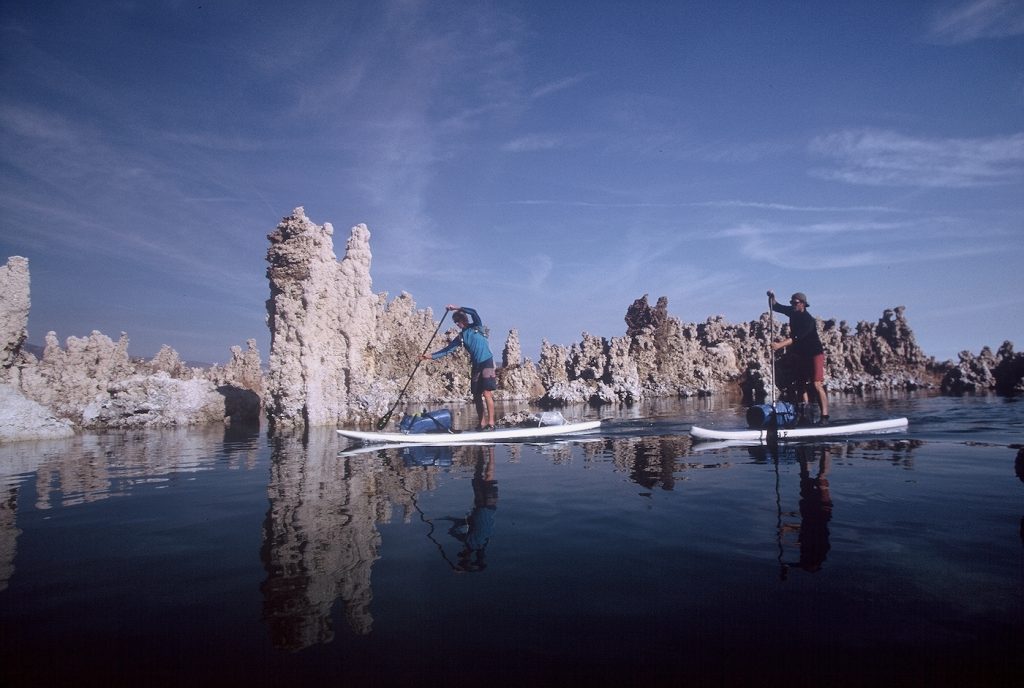
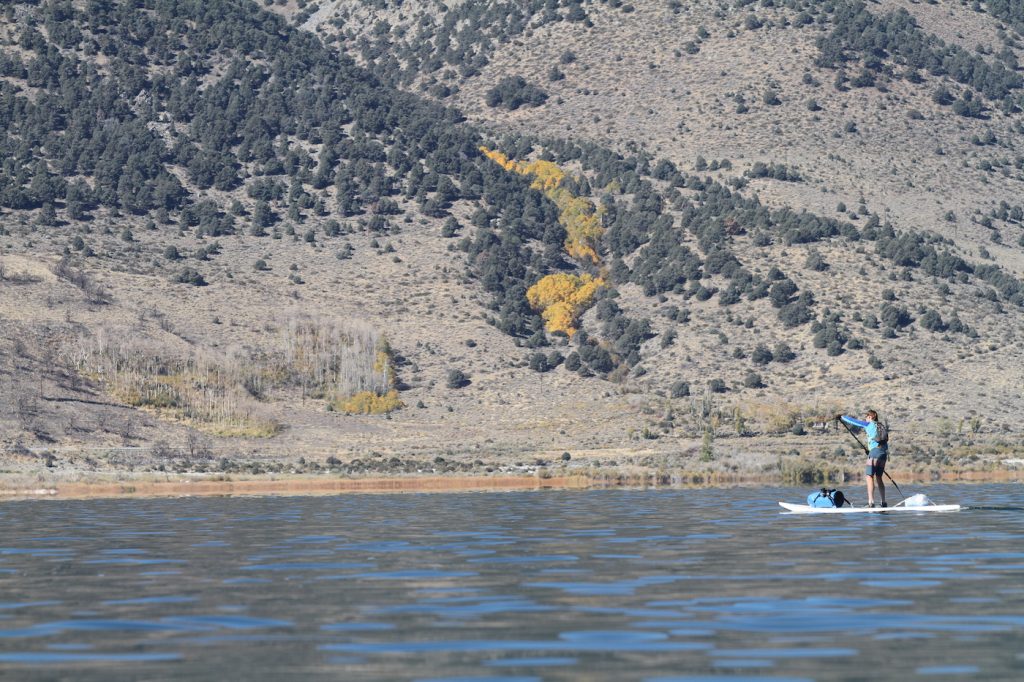
“I think we started a little late in the day,” as the “captain” of the “K-Mart” raft started his conversation with us. “I lost an oar in the wind. How far is it back to the boat launch?”
We explained to him that they didn’t have any lights and their best option was to walk their raft in the shallows instead of trying to paddle with minimal gear. They didn’t seem to be in agreement as they reluctantly walked off, maybe a little defeated, but not realizing how lucky they actually were to be on dry land.
For a brief moment I could sympathize with the man at the visitor center, where he’s probably encountered many ambitious folks wanting to paddle Mono Lake, but most were not aware of their surroundings and skill level before possibly vanishing on the high desert plains.





